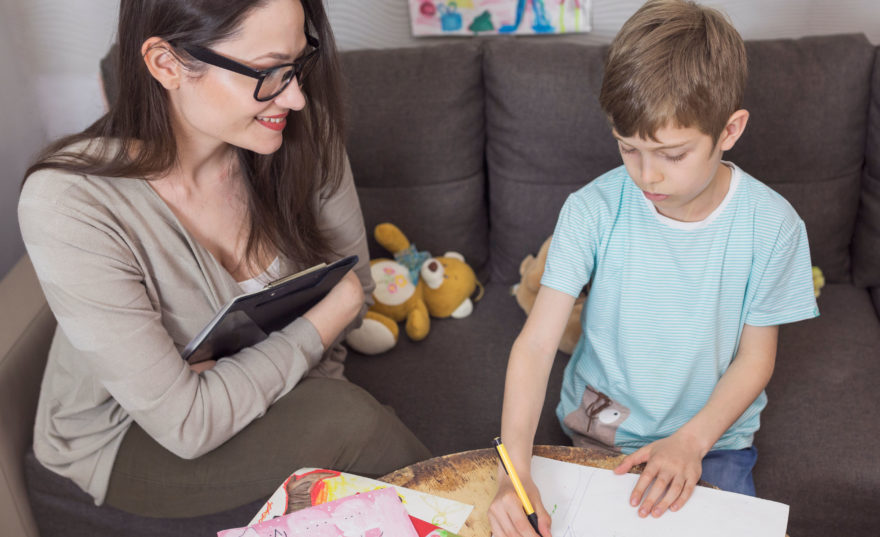The essential elements of shared decision making and what this can look like for CAMHS
The implementation of shared decision making (SDM) reinforces patient-centered or person-centered care (PCC) which supports service users to make informed decisions, helps them to successfully manage their own health and care, and delivers care with respect for their individual abilities, preferences, lifestyles and goals (Harding, Wait, & Scrutton, 2015; p.131). Evidence suggests that service users are not always involved in the decision-making process and their preferences and goals are unheard; this can make them feel lonely, ignored and betrayed (Coyne, Hayes, Gallagher, & Regan, 2006). In CAMHS, service users include children as primary service users and parents or caregivers can be considered as secondary service users. Therefore, the aim should be to involve all parties (age appropriate) in the decision-making process. Makoul and Clayman (2006), proposed the following essential elements that should be involved if SDM is to be achieved.
- Define/explain the problem: At the very beginning, the service provider and service users discuss what the problem is and what decisions are being made.
- Present options: Service Providers will review options (if options exist) and service users will also be allowed to raise options which they may be aware of.
- Discuss pros/cons (benefits/risks/costs): For each option, service providers and service users should discuss the pros and cons. It should be noted that there may be some subjective differences in the importance of benefit, risks, and costs, including convenience and opportunity cost.
- Patient values/preferences: Service users, being experts in their own lives, should be allowed to express the level of importance, any ideas or concerns placed on the health outcome.
- Discuss patient ability/self-efficacy: Scaling questions may be used to obtain service users’ ability or self-efficacy to follow-through with a chosen plan. This can be critical when assessing the viability of options.
- Doctor knowledge/recommendations: Service providers being experts in mental health care and treatment can provide recommendations and their preferred form of treatment and care.
- Check/clarify understanding: Throughout the process, all parties should periodically check the understanding of facts and perspectives, providing further clarification as needed.
- Make or explicitly defer a decision: At the first session, decisions are not always made. Service users and service providers can agree to defer decisions for a later time. This allows all parties to seek additional input from other family members or the healthcare team.
- Arrange follow-up: It is essential that parties arrange a follow-up to track the outcome of the decisions that have been made or reach resolutions on those that have not been made.
Researchers agree that patient participation in treatment decisions lead to improved health outcomes (Edbrooke-Childs et al., 2016; Westermann et al., 2013). Although, in an ideal setting, SDM is conceptualized as an equal partnership, it is important to see the decision-making process as a continuum with service providers making decisions on one end and service users making decisions on the other and SDM at the middle. Therefore, experiences of SDM may differ for everyone (Kon, 2010; Makoul & Clayman, 2006).
This is a follow-up on a previous guest blog on how shared decision making can support parents at CAMHS.
This contribution was made possible by funding from the European Union’s Horizon 2020 research and innovation programme under the Marie Skłodowska-Curie grant agreement No. 722561
Original Article
Makoul, G., & Clayman, M. (2006). An integrative model of shared decision making in medical encounters. Patient Education And Counseling, 60(3), 301-312. http://dx.doi.org/10.1016/j.pec.2005.06.010
References
Coyne, I., Hayes, E., Gallagher, P., & Regan, G. (2006). Giving children a voice: Investigation of children’s experiences of participation in consultation and decision-making in Irish hospitals. Dublin: Office of the Minister of Children.
Edbrooke-Childs, J., Jacob, J., Argent, R., Patalay, P., Deighton, J., & Wolpert, M. (2016). The relationship between child- and parent-reported shared decision making and child-, parent-, and clinician-reported treatment outcome in routinely collected child mental health services data. Clinical Child Psychology And Psychiatry, 324-338.
Harding, E., Wait, S., & Scrutton, J. (2015). The state of play in person-centred care: A pragmatic review of how person-centred care is defined, applied and measured. London: The Health Policy Partnership.
Kon, A. A. (2010). The Shared Decision-Making Continuum. The Journal of the American Medical Association, 903.
Makoul, G., & Clayman, M. L. (2006). An integrative model of shared decision making in medical encounters. Patient Education and Counseling, 301-312.
Westermann, G. M., Verheij, F., Winkens, B., Verhulst, F. C., & Van Oort, F. V. (2013). Structured shared decision-making using dialogue and visualization: A randomized controlled trial. Patient Education And Counseling, 74-81.
